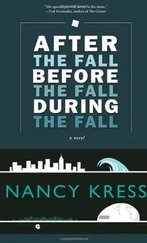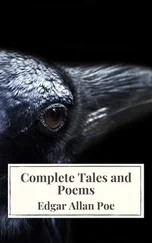Where is the intersection between life and art? For Gus Franklin, the coordinates can be mapped with GPS precision. Art and life collide in an aircraft hangar on Long Island. This is where twelve oversize paintings now hang, shadowed in the light that spills in through milky windows, the large hangar doors kept closed to keep out the prying eyes of cameras. Twelve photorealistic images of human disaster, suspended by wire. At Gus’s urging great care has been taken to ensure no harm comes to the work. Despite O’Brien’s witch-hunt dogma, Gus still isn’t convinced they’ve done anything except harass the victim, and he won’t be responsible for damaging an artist’s legacy or impeding a well-earned second chance.
He stands now with a multi-jurisdictional team of agents and representatives from the airline and aircraft manufacturer, studying the paintings — not for their artistic pedigree, but as evidence. Is it possible, they ask themselves, that within these paintings are clues to the erasure of nine people and a million-dollar aircraft? It is a surreal exercise, made haunting by the location in which they stand. In the middle of the space, folding tables have been erected, upon which technicians have laid out the debris from the crash. With the addition of the paintings, there is now a tension in the space — a push/pull between wreckage and art that causes each man and woman to struggle with an unexpected feeling — that somehow the evidence has become art, not the other way around.
Gus stands in front of the largest work, a three-canvas spread. On the far right is a farmhouse. On the far left, a tornado has formed. In the center a woman stands at the lip of a cornfield. He studies the towering stalks, squints at the woman’s face. As an engineer, he finds the act of art beyond him — the idea that the object itself (canvas, wood, and oil) is not the point, and that instead some intangible experience created from suggestion, from the intersection of materials, colors, and content has been created. Art exists not inside the piece itself, but inside the mind of the viewer.
And yet even Gus has to admit, there is an unsettling power in the room now, a haunting specter of mass death that comes from the volume and character of images.
It is in the acknowledgment of this thought that something else strikes him.
In each painting there is a woman.
And all the women have the same face.
“What do you think?” Agent Hex of the OFAC asks him.
Gus shakes his head. It’s the nature of the human mind to look for connections , he thinks. Then Marcy approaches and tells them that divers have found what they believe to be the missing wreck.
The room erupts with voices, but Gus stares at the painting of drowning men in a hangar full of drying debris. One thing is real. The other is fiction. How he wishes it was the painting that were death and the truth fiction. But then he nods and crosses to a secure phone line. There is a moment in every search, he thinks, when it feels like the hunt will never end. And then it does.
Agent Mayberry coordinates with the Coast Guard ship that found the wreck. Divers with helmet cameras, he tells Gus, are being deployed. The feed will be sent to them via a secure channel, already in place. An hour later, Gus sits before a plastic card table inside the hangar. This is where he has taken most of his meals for the last two weeks. The other members of his team stand behind him, drinking Dunkin’ Donuts coffee from Styrofoam cups. Mayberry is on a satphone, talking directly to the Coast Guard cutter.
“The feed should be coming up now,” he says.
Gus adjusts the angle of monitor, though rationally he knows this will do nothing to help speed the connection. It is a nervous busyness. For a moment there is just a video window with no connection — FEED MISSING — then a sudden snap of blue signal. Not ocean blue, but an electronic blue, pixilated. Then that hue gives way to the soundless green of an underwater lens. The divers (Gus has been told there are three) are each projecting light from a head rig, and the video has an eerie handheld quality. It takes Gus a moment to orient himself, as the divers are already very close to what appears to be the fuselage — a scratched white shell bisected by what appears to be thick red lines.
“There’s the airline logo,” says Royce and he shows them a photo of the plane. GULLWING is scripted on the side of the plane in slanting red letters.
“Can we communicate?” Gus asks the room. “See if they can find the ID number.”
There is a scramble to try to reach someone on the Coast Guard cutter. But by the time word gets to the divers they are already moving, floating on, working their way — Gus intuits — toward the rear of the aircraft. As they pass over the port wing, Gus can see that it has snapped off with great force. The metal around the tear is twisted and curved. He looks over to the partial wing lying on the hangar floor next to a tape measure grid.
“The tail’s gone,” says Royce. Gus looks back at the screen. White lights are passing over the fuselage, moving in a slow nod as the divers kick their fins. The rear of the jet is gone, the aircraft reclining in the silt, so that the jagged tear is half buried — a machine consumed by nature.
“No,” says the woman from the airline. “It’s there, isn’t it? In the distance?”
Gus squints at the screen, and believes he can make out a glimmer on the edge of the light, man-made shapes tilted and swaying gently in the current. But then the diver’s camera turns and they are looking at the hole in the back of the plane, and as the camera tilts up, the full length of the fuselage is revealed for the first time. And suddenly they have perspective.
“I’ve got a crumple zone,” says one of the engineers.
“I see it,” says Gus, wanting to cut off speculation. The craft will have to be raised and transported back here for a full examination. Lucky for them it’s not too deep. But another hurricane is anticipated next week, and the seas are already becoming unpredictable. They will have to move fast.
A diver appears before the camera, his legs moving. He points to the blackness at the back of the plane, then to himself. The camera nods. The diver turns.
Gus sits forward in his chair, aware of the power of the moment.
They are entering the cemetery.
How to describe the things we see onscreen, experiences we have that are not ours? After so many hours (days, weeks, years) of watching TV — the morning talk shows, the daily soaps, the nightly news and then into prime time ( The Bachelor, Game of Thrones, The Voice ) — after a decade of studying the viral videos of late-night hosts and Funny or Die clips emailed by friends, how are we to tell the difference between them, if the experience of watching them is the same? To watch the Twin Towers fall and on the same device in the same room then watch a marathon of Everybody Loves Raymond .
To Netflix an episode of The Care Bears with your children, and then later that night (after the kids are in bed) search for amateur couples who’ve filmed themselves breaking the laws of several states. To videoconference from your work computer with Jan and Michael from the Akron office (about the new time-sheet protocols), then click (against your better instincts) on an embedded link to a jihadi beheading video. How do we separate these things in our brains when the experience of watching them — sitting or standing before the screen, perhaps eating a bowl of cereal, either alone or with others, but, in any case, always with part of us still rooted in our own daily slog (distracted by deadlines, trying to decide what to wear on a date later) — is the same?
Watching, by definition, is different from doing.
Читать дальше












